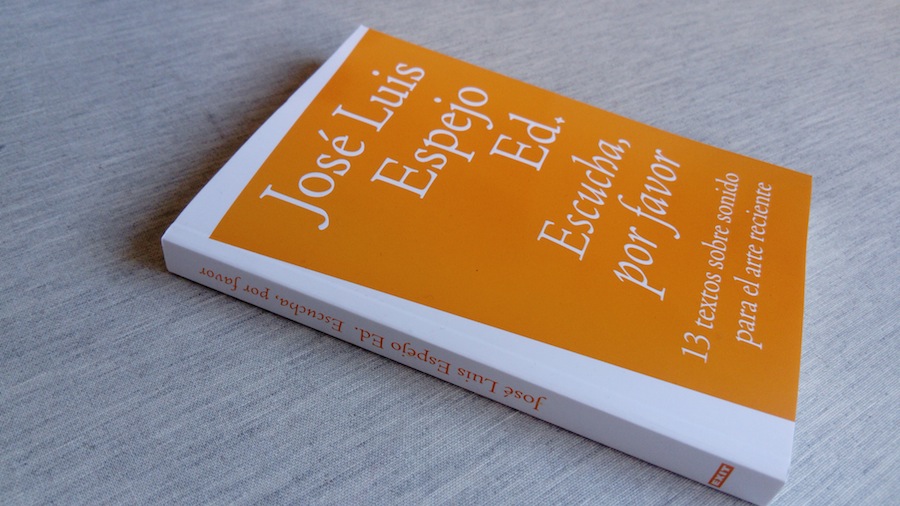Video:
Video:
The art and music critic José Manuel Costa was a friend of mine. When he died in early 2018, a forthcoming publication on sound art for EX(it) Libris was left unfinished. Months passed and, still under the weight of this burden, I found myself in the difficult position of replacing his editorship.
And so, in June 2019, Escucha, por favor [Listen, please] was published and conceived, as an invitation to discover some of the resonances of recent art. A selection of texts which, though partially questioning the canon of the history of sound art, provide an introduction to the last hundred years of this field. For that purpose, it draws in equal measure from texts about canonical exhibitions, discourses, and chronologies, alongside publications in a variety of formats, including books, magazines, and scientific papers. In doing so it showcases a series of names that have not always occupied a prominent place in official narratives: be it because they were women, because they were born in or wrote outside of the “West” or because, briefly put, they broke with the canon established by Europe and the United States from the second half of the 20th century.
This is the complete table of contents of the book, where Pauline Olivero’s texts, Auralizing the Sonosphere: A Vocabulary for Inner Sound and Sounding, officiates as an introduction to the vocabulary of listening, followed by an un-definition of sound art signed by Douglas Kahn, Noise Water Meat: A History of Sound in the Arts, and a chronology written in Germany in the 1980s by Helga de la Motte-Haber, El arte sonoro en el siglo xx: una cronología [Sound Art in the 20th Century: A Chronology].
The book proceeds into a series of historical texts, from the early 20th century in Russia, with a text by Andrey Smirnov, Sound in Z, and in Spain, with Carmen Cecilia Piñero Gil’s article “Carmen Barrandas: Modernity and Internal Exhile” [Carmen Barrandas: Modernidad y exilio interno]. We pass then into a survey of some of the crucial figures of the second half of the 20th century such as Charlotte Moorman, one of whose records was reviewed by Brian Morton in Una chica bañada en dulce [A Girl Bathed in Sweetness], the essential text by Hildegard Westerkamp, Soundwalking, David Crowley’s detailed history of sound experimentation in Eastern Europe, Sounding the Body Electric Experiments in Art and Music in Eastern Europe 1957-1984, and John Oswald’s textbook of plunderphonics.
Reaching the 21st century, we collect an interview with David Toop about his polemic exhibition Sonic Boom, the curatorial text written by Bonaventure Soh Bejeng Ndikung for documenta 14, Every Time A Ear Di Soun, and Susan Campos Fonseca’s conference, experimentalism(s) and microcoloniality of listering]. Finally, the book closes with a tribute to José Manuel Costa, a text that calls us to reflect on the future of what has come to be known as Sound Art: Hacia una nueva economía del arte (sonoro) [Towards a new economy of (sound) art].

